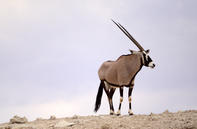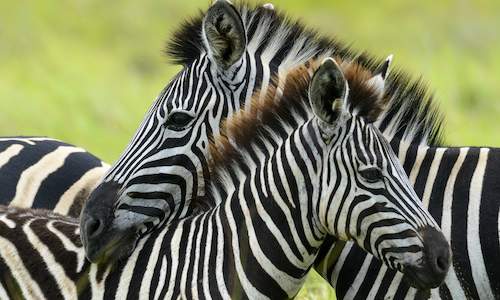
Name
Oryx or gemsbok (Oryx gazella)Introduction
The oryx can be considered a symbol of the Namibian Desert, being thoroughbred to the vast hot spaces spotted scantily with thorn trees. The oryx has great strength, endurance, and can survive on sparse desert grass. It minimises its water needs by allowing its body temperature to rise from its normal 35.7°C to 45°C, then cooling itself down through evaporation, nasal panting and sweating. It concentrates its urine and absorbs all moisture possible.Appearance
Bulls measure about 1.2 m at the shoulders and can have a mass of 240 kg. This species has prominent black stripes on the flanks, a long black tail and white and black markings on the face and legs. Both sexes carry horns, the bulls’ being shorter and thicker than that of the cows.Oryx Diet
The oryx feeds on leaves, grasses and herbs full of nutrients. As for water intake, they dig for succulents and eat tsamma melons. In the dry seasons, they eat flowers and will browse for food.Oryx Breeding
After a gestation period of nine months, a single calf is born. Oryxes have no specific breeding period in South Africa. Mating occurs between dominant males of the territory and receptive females.Oryx Behaviour
Oryx behaviour is focused on energy and water conservation. During the heat of the day, they will rest in shade. When there is no shade, they will lie in a manner which exposes as little of their body surface to the sun.
Non-territorial bulls yield to dominant territorial bulls to avoid conflict and challenges. Female herds and non-territorial bulls move between the territories of dominant bulls as they forage for fodder. Solitary bulls have been known to impale and kill lions attacking them.
 Learning about the mammals of South Africa is now so much easier for all South Africans - SouthAfrica.co.za is an excellent source of inform...
Learning about the mammals of South Africa is now so much easier for all South Africans - SouthAfrica.co.za is an excellent source of inform...